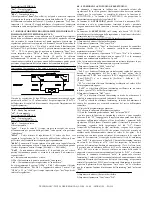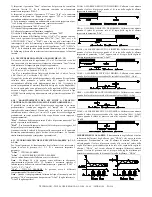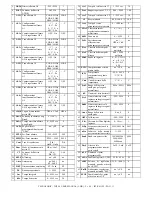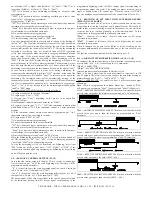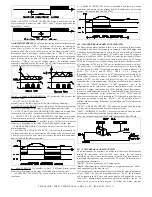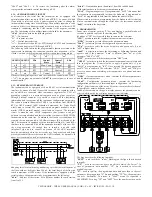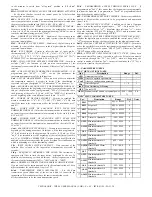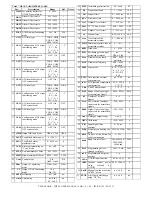
LHdE = RELATIVE WINDOW ALARM
:
The alarm is activated when the
process value goes under the value [SEtP - ALnL ] or goes upper than the
value [SEtP + ALnH ].
ALARMS HYSTERESIS:
The alarms functioning depends furthermore on
the alarms hysteresis ("HALn" parameter), which works in asymmetric
mode. More precisely, in case of minimum alarm, the alarm will be
activated when the process value goes under the alarm set and will be
deactivated when it goes upper than the alarm set + "HALn"; in case of
maximum alarm, the alarm will be activated when the process value goes
upper than the alarm set and will be deactivated when it goes under the
alarm set - "HALn". In case of window alarms, the minimum alarm
example is applicable to the lowest set ("ALnL") while the maximum alarm
example is applicable to the higher set ("ALnH").
"ALnc" - ALARM CONFIGURATION
:
The parameter can assume the
following values :
--C/--o/-SC/-So/L-C/L-o/LSC/LSo
precisely, any of the three types (a b c) has the following meanings :
c - OUTPUT LOGIC MODE
:
It's possible to have 2 different alarm output
behaviours, depending on the value of the first figure from the right.
C = OUTPUT ON IN ALARM CONDITIONS
:
The output is activated when
the alarm is active, while is deactivated while the alarm is not active.
o = OUTPUT OFF IN ALARM CONDITIONS: The output is activated
when the alarm is not active, while is deactivated while the alarm is active.
b- START-UP BEHAVIOUR
:
It's possible to have 2 different alarm output
behaviours, depending on the value of the second figure from the right.
- = NORMAL BEHAVIOUR: The alarm is always activated when there are
alarm conditions.
S = ALARM NOT ACTIVE AT START-UP: If at start-up the instrument is
in alarm conditions this is not activated. The alarm will be activated only
when the process value, after start-up, reaches the not-alarm conditions
and successively the alarm conditions.
a - ALARM LATCH
:
It's possible to have 2 different alarm output
behaviours, depending on the value of the third figure from he right.
- = ALARM NOT LATCHED: The alarm remains active only in alarm
conditions.
L = ALARM LATCHED: The alarm is activated when there are alarm
conditions and remains active although these conditions are not existing
anymore, till is not pushed the "LEFT" key.
4.12 - HEATER BREAK ALARM FUNCTION (HB)
The Heater Break alarm function (Alarm in case of broken heating element
) is available only when the instrument is equipped with A3/HB output and
it has been defined the functioning of it to be used as Heater Break function
(par. "FAL3" = HB). Furthermore, it's usable only when C1 output is
digital type (or Relay or SSR). If A3/HB is present the instrument will have
an input (TAHB) able to measure the load current driven by C1 output.
This kind of input accepts signals coming from current transformers (TA)
till a maximum of 200 mA (at 200 mA the instrument measure a value of
100.0).Therefore, to obtain the correct Ampere measure it will occur that
TA ratio would be 1/0,002. Tecnologic can supply 2 standard models : TR
03536 : 25A / 0,05 A and TR 03537 : 100 A / 0,2 A . During the
functioning it's possible to visualise on SV display the current measured by
TAHB input, expressed in Ampere (if obviously the TA ratio is 1/0,002)
pushing "LEFT" key. The alarm will be active when, in C1 output active
conditions, the current measured by TAHB input will results lower than the
value set on "ALHb" parameter. "ALHb" parameter has to be
programmed with the value of the current normally taken over by the load
driven by C1 output, considering as well the network tension fluctuations ,
in order to avoid undesired alarms. As regard the HB alarm hysteresis it's
automatically calculated by the instrument as 2% of "ALHb" and the
behaviour is the same as a minimum alarm. If it's desired to deactivate the
HB alarm, it's enough to program "ALHb" = 0.0.
It's possible to have 2
different HB alarm output behaviours, depending on the "rLHb" parameter
programmed.
"OPEn" = NORMALLY OPENED - The output is activated when the alarm
is active, while is deactivated when the alarm is not active.
"CLoS" = NORMALLY CLOSED - The output is activated when the alarm
is not active, while is deactivated when the alarm is active.
Note : the current measure through TAHB input needs at least 100 mS
.
4.13 - LOOP BREAK ALARM FUNCTION
In all instruments it's available an alarm that intervenes, automatically
turning the instrument into the OFF state, when, for any reason
(thermocouple short circuit, thermocouple inversion, load interruption) is
interrupted the regulation ring controlled by C1 output. To this alarm are
associated two parameters :
"LbAP"
- Value in percentage of C1 output power.
"LbAt" -
Maximum time at which the power, programmed on par. "LbAP",
can be applicable to the load (in sec.)
If C1 output power remains at an higher value than the value programmed
on par. "LbAP", for the time programmed on par. "LbAt", the instrument
will be turned into OFF state and on the display will appear the writing
"LbA OFF", flashing. Both parameters have to be carefully chosen in
order not to give rise to false alarms. To exclude the alarm, program
TECNOLOGIC - THP 94
USER MANUAL (I - GB) - Vr. 05 - ISTR 01195 - PAG. 17



